On New Year’s Eve, Queen Margrethe II of Denmark announced that she would abdicate her throne after 52 years on the throne. What followed was a masterclass in carrying off a smooth transition of power; Denmark’s longest-reigning monarch (and Europe’s final remaining queen regnant, for the time being) signed the declaration giving up the crown just over a week ago, on January 14th, 2024.
It was not a lavish affair, nor was every facet of the day steeped in symbolism and tradition. It was quite the contrast, in that way, with the drawn-out process that followed the passing of Margrethe’s cousin, the UK’s Queen Elizabeth II. After Elizabeth’s death on September 8th, 2022, the world was drip-fed updates on the who, what, when, where, and how of the accession of her son, King Charles III, for nearly eight months. It was a grueling time to be a royal commentator and it left the public wondering why on earth the process of replacing one monarch with another was taking so long.
In both Denmark and Britain, a new monarch is appointed at the exact moment the old one is out of the role. But the UK is one of the last monarchies in the world to still link the appointment of a new monarch to a lavish coronation ceremony, one which takes months of preparation and costs the nation millions.
The accession of Denmark’s new king, Frederik X, offers a stark contrast to Britain’s convoluted and costly succession process. And one week after witnessing the stroke of genius that was carried out in Copenhagen on January 14th, I think I can sum up the reasons why the Danes have the right end of the stick here.
Here are some fast facts to get us on the same page, monarchically speaking, before going any further:
The date for Queen Margrethe’s abdication (and Crown Prince Frederik’s own accession) was chosen specifically because it was her Accession Day. Margrethe became Queen exactly 52 years ago on January 14, 1972, following the death of her father, King Frederik IX.
Every Danish king since 1513, by the way, has been named either Frederik or Christian. The new king’s son, Crown Prince Christian, ensures that tradition will endure.
Denmark does not, however, have a tradition of abdication. Queen Margrethe is the first Danish monarch in nearly 900 years to abdicate, and just the second in all of the country’s history to do so voluntarily. The only other person to do so was Eric III, who gave the crown to his son in 1146 and died later the same year.
Why then, did Margrethe choose this avenue to vacate her throne? In a 2016 interview, after all, she practically rejected any possibility of an abdication, saying: “In this country, we haven’t gone in for that way of handing over. It’s always been: you stay as long as you live. That’s what my father did and my predecessors. And the way I see it too.”
Aside from her persistent and worsening health issues over the past several decades, I think there are some deeper motivations behind Margrethe’s change of heart—ones which suggest the now-former Queen had a savvy eye out for the future of Denmark’s monarchy.
A time for celebration, not upheaval
Abdication is a vehicle available in many monarchies to enable an orderly transition of power. This can be done in a time of crisis, as a rapid, sometimes drastic solution to ensure the monarchy continues. It can also be an option in a time of stability to allow for a relaxed handover. In some countries, the latter is becoming more of an accepted custom—to “make room” for the next generation by stepping down voluntarily.
Take the Netherlands as an example, where “four out of six sovereigns since the monarchy was established in 1813 have abdicated.” Most recently, in 2013, Queen Beatrix handed the throne to her eldest son, now King Willem-Alexander. Beatrix, like Margrethe, decided to neatly bookend her reign; she handed the crown off on April 30th, the same day she herself had acceded in 1980. What’s more, Queen Beatrix herself had assumed the throne through her own mother, Queen Juliana’s, abdication.
The Dutch celebrate their monarch in a huge annual celebration called King’s Day (Koningsdag) or Queen’s Day (Koninginnedag), depending on the current monarch. This is currently held on King’s birthday, April 27th. But under Queen Beatrix, it was held on April 30th—her accession day. Observed through street parties, food, dancing, and the vrijmarkt (“free market,” where the Dutch sell their used items), Koningsdag has been a symbol of Dutch unity and national pride for generations. If Queen Beatrix had stuck to the tradition of linking it to her birthday, the party would have been rather more subdued, since she was born on January 31st. But since her accession day was brought about by an abdication, and not the day that marked the death of her mother, Beatrix was able to seamlessly keep the party going, as it were.
Monarchies that do not routinely utilize abdication, like the UK, contain Kings and Queens who must mark their Accession Days rather differently. An accession can never be a wholly joyful occurrence because, by definition, it marks the death of your predecessor. King Charles III can hardly start throwing street parties every year on September 8th. Each of his accession days will forevermore be marked with tributes to his late, widely-beloved mother. With that will come memories of her slow decline and disappearance from public duties—a sad thing to dwell on, especially when thinking of a Queen who was beloved for her wit and steadfastness.
I think Queen Margrethe had this in mind when she decided to abdicate. While she certainly cannot be described as “still in her prime,” she is still readily willing and able to carry out public responsibilities with a smile. Her beloved Denmark will not have to connect memories of her decline and death to the accession of their new King. Rather, they can pride themselves on having a Queen who went out on her own terms and opened the door wide for the next generation.
The choice to plan an abdication—and see it carried out in a short timeframe—likewise expedited the transition and heightened the emotion attached to the new King Frederik X and his wife, Queen Mary.
Not that they necessarily needed the boost to aid their popularity as sovereigns; Denmark has one of Europe’s most popular monarchies. King Frederik enjoys an 84% approval rating amongst the Danish population, trailing just one point behind his mother and wife, who each enjoy 85%. The monarchy itself has consistently earned approval ratings between 82% and 92%…blowing the British monarchy’s paltry 62% out of the water.
“Tens of thousands” were expected to gather in Copenhagen to witness the Danish Prime Minister Mette Frederiksen proclaim the new monarch on the balcony of Christiansborg Palace. The final number of onlookers ended up being over 100,000.
A modern view of inherited privilege
The handover between Margrethe and Fredrik can best be characterized as unfussy. She signed a declaration of abdication, immediately bestowing the crown on her heir, and handed the paper to the Prime Minister—simply saying, “There.” She then left her seat at the head of the Council of State. Frederik moved into that empty seat, and his son, Prince Christian, moved into the one just vacated by his father. A simple, straightforward, and very literal illustration of the flow of succession.
But that doesn’t mean the accession wasn’t also marked by tradition and ceremony.
The Danish royal family’s website indicates:
“Since the Constitution of 1849, there has been a tradition that Danish sovereigns are proclaimed from Christiansborg Palace. The tradition…originates from olden days when a throne succession was announced to the people at the “landsting,” or open assemblies, in the various regions of the country. At that time, it occurred when a trusted public servant loudly proclaimed the accession to the throne to all four corners of the world so that everyone had the opportunity to hear it. As the proclamation now takes place from a balcony, the Prime Minister responsible for the proclamation abstains from turning in towards the Throne Room and thus makes the proclamation to three corners of the world.”
In other words, Frederik had been King from the moment that his mother signed her declaration, but the proclamation on the Palace balcony is what sealed the deal. Watching as a non-Danish person, taking in the rather dramatic language, with its forceful glottal stops, and the gravitas of Prime Minister Mette Frederiksen…the moment felt like a convergence of the modern with the ancient, in the best possible way.
The Danes strike me as a populace who are both exceedingly proud of their heritage and satisfied with their pragmatic approach to the present. It’s an incredible balance that speaks to just how delicate Queen Margrethe’s approach to handing off her crown needed to be.
Of course, the Danes were faced with a much simpler mandate for their accession day. The British Monarch, in contrast to many others across the globe today, remains the head of the Church of England—a fact that contributes to the pomp and circumstance of their Coronation rite. The British Monarch must be consecrated before God as they formally step into their role, something that is not a consideration for the Danish monarch, who is almost symbolic today.
The new King will have a “limited role” in the government of Denmark under the Danish constitution. But like their British Counterparts, the new coalition of ruling parties after a national election will need to present their government for the monarch's official approval. King Frederik will also formally approve each new law passed by the Danish parliament, the Folketing, which includes “the ceremonial approval of each new Danish citizen.”
In short, this is a weighty role that is being treated as the serious piece of state governance that it still is. But it is not trapped in gold and ivory to drive home any points about the Monarch having a “divine right” to occupy their position at the head of the pecking order. Instead, you had gratitude and grace on display—more on that below.
The Fascinator is a reader-supported publication. To help me continue to provide commentary like this full-time, consider upgrading to a paid subscription.
Uniting, not dividing
In King Frederik’s first speech as monarch, which immediately followed his proclamation, he paid tribute to his mother, saying she would “always be remembered as an extraordinary ruler.”
He continued, “My hope is to become a unifying king of tomorrow. It is a task I have been approaching all my life. It is a task I take on with pride, respect, and joy.” He closed by announcing his official motto: “United, committed, for the kingdom of Denmark.”
Unity, aside from balance, was another major theme during this Abdication/Accession day. King Frederik was joined on the balcony by his wife, the new Queen Mary, and—in a surprise addition to the proceedings—all four of the couple’s children. It was a chance for a public who have been hearing rumors of a royal affair to breathe out; the couple shared a kiss that seemed to be a genuine display of reassurance and affection between the couple.
In his newly released memoir, Kongeord (“King’s Word”), Frederik writes of Mary, “I love marriage, my wife, our children and the whole happy base that arises for the people who manage to stay together and persevere.” He calls his Australian-born Queen his “partner and wing woman” and writes that he has “learned a lot from having a wife who from time to time reminds me that I am of course not always right and that my words are not reliable per se, just because I'm the man of the house.”
The royal couple weren’t the only potential source of tension during this historic accession, though. The King’s brother, Prince Joachim, was present as a silent figure of support—even though he and his wife, Princess Marie, relocated to Washington, D.C. last year following Queen Margrethe’s decision to strip the couple’s children of their royal titles.
The former Queen described that move—which deprived the four children of their Prince/ss titles and HRH designations—as “necessary future-proofing of the monarchy.” See again: Danish pragmatism at work; the move reduced the number of individuals who could be seen as a “drain” on the nation’s resources.
Despite both Joachim and Marie expressing dismay openly to the press about Margrethe’s decision, the Palace never entertained any questions about whether the younger prince would show up to support his brother becoming King. He was a background figure on Sunday (featuring briefly in an Instagram Reel released by the Palace—clever!) and was again present as the Royal Family attended a meeting of Parliament, where Frederik’s accession was formally announced.
We don’t need to look far to see the alternate reality, where media figures would be allowed to run rampant with speculation over the brother’s current relationship in the lead-up to the big day. The British tabloid press ate out for months on the “will they, won’t they” stories pertaining to the presence (or not) of Prince Harry and Meghan Markle at King Charles’ Coronation. Most of these stories emphasized, or perhaps fabricated, a rift between the new monarch and his second son.
The narrative and eventual outcome—the Duke of Sussex attended, to a frosty reception, and without his wife—ended up, in the eyes of many, making the British Monarchy appear petty and cold. The cloud of negativity from this endless barrage of reporting overshadowed what should have been a celebratory day, and one which Charles needed to milk for every ounce of goodwill possible.
How much more powerful would a display of unity, like that seen this month in Denmark, have been for the Brits? We can only sip our tea wistfully and wonder.
Kings and queens are people, too
Speaking of the Danes’ cousins in the British Isles, Reuters noted earlier this month that “the opaque nature and wealth of the British royals have sparked controversy and some hostility”—ouch. But it’s true. The Danish royals, by comparison, boast cheaper royals to maintain (the Danish royals are. up to 8 times less costly to the taxpayer than in the UK), and a royal family who are exceedingly more personable. Or at least, less guarded.
King Frederik and Queen Mary, during their time as the Crown Prince couple, struck a pitch-perfect balance between carrying out official duties and connecting to the nation as parents and (get this) people.
Pictures from their courtship in the early-aughts are utterly charming in their reliability. Reports that they used to drop their four children off at school in Copenhagen on bicycles are endearing. They talk to the press in a manner that is downright candid when compared to the stiff, media-trained mannerisms of the British. And yet, they also take on official duties within their patronages and on behalf of the Palace with incredible poise and resolve.
The balance (once again!) that they have been able to find—between being modern parents and duty-bound royal representatives—has been remarkable to watch unfold. But after their time as Crown Prince and Princess came to a close, Frederik and Mary showed the world something else: genuine emotion.
There was a balance, too, of professionalism and genuine awe at the hand that Frederik and Mary have found themselves being dealt.
Following his speech, the King was visibly overwhelmed by the fervor of the crowd and paused several times to wipe away tears. Queen Mary, too, appeared overcome with emotion and received several reassuring squeezes of the hand from her husband when she joined him on the balcony.
This was the moment that had me tearing up, and I was just watching on my iPhone from a tour bus in Ireland. (My vacation was great, by the way!) I couldn’t help but compare it to clips from the British Coronation last May, which, more often than not, featured members of the Royal Family looking bored with the lengthy service, or else vaguely concerned that they would mess up their lines. As for looking genuinely happy for the new King—or for Charles himself appearing grateful or pleased—I’m not sure I could pinpoint any of those moments for you.
The most heart-wrenching moment in Denmark, by contrast, came from Queen Margrethe herself, who appeared to be nothing less than a proud mother as she watched her son take her seat at the table.
This is a woman who has spent the past 52 years exemplifying, in the way that few alive today can, the grace and poise needed to reign as the head of a symbolic monarchy. The moment when the weight of that role was lifted from her was being televised for the world to see. And the look on her face, of sorrow mixed with pride, will be hard to forget.
Before turning and unceremoniously leaving the room, Queen Margrethe powerfully declared, “God save the King!” It was unclear if that moment was prescribed or improvised, but the effect was unmistakable. The Crown proudly continues, even as this powerhouse of a woman needs to make a personal sacrifice for it to do so.
One can’t help but think, Charles would never.


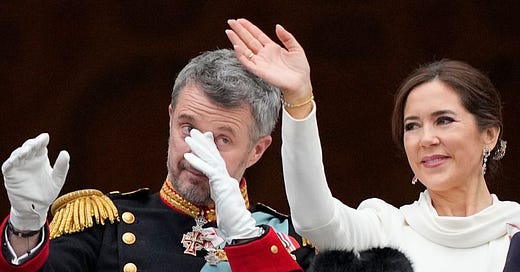


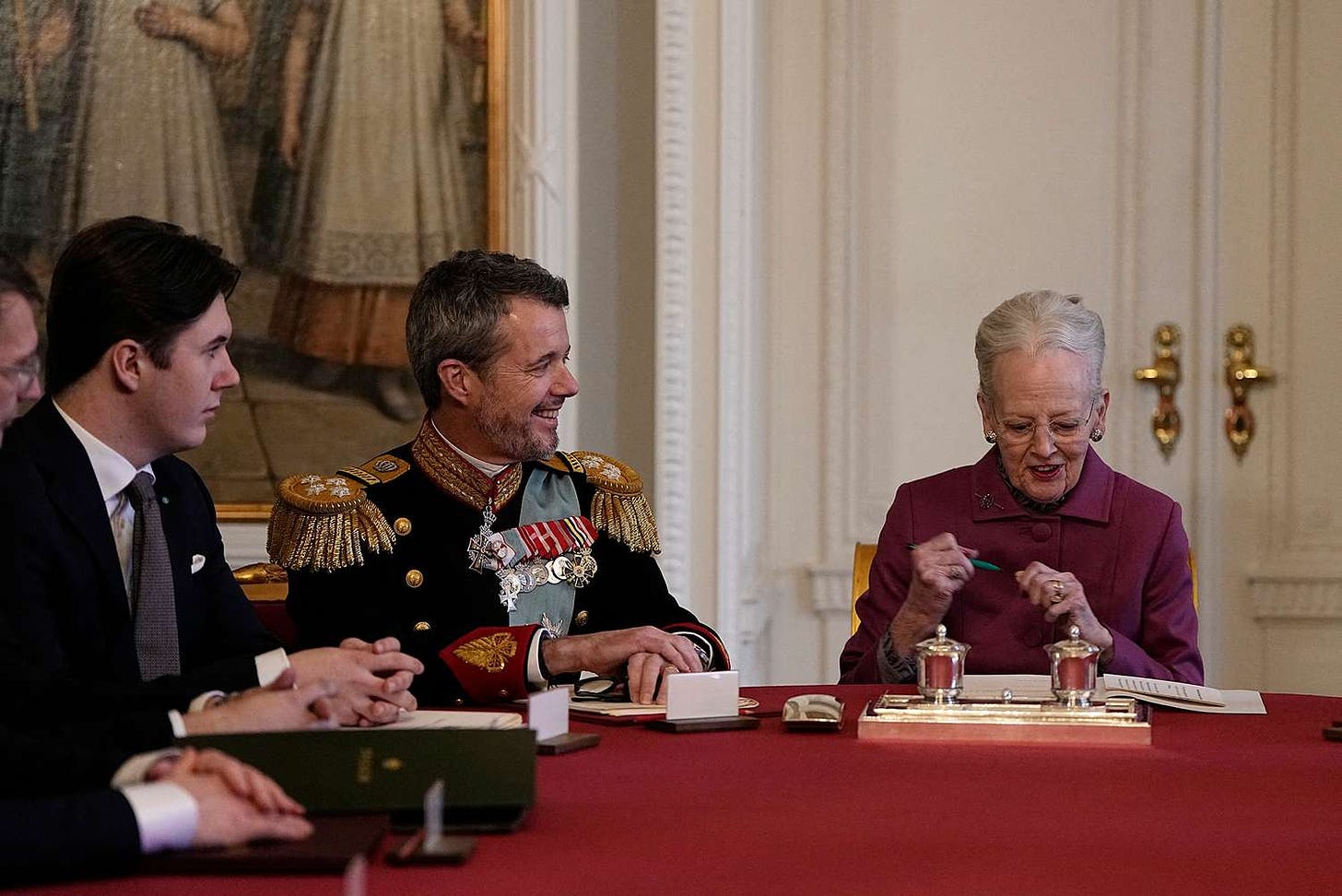
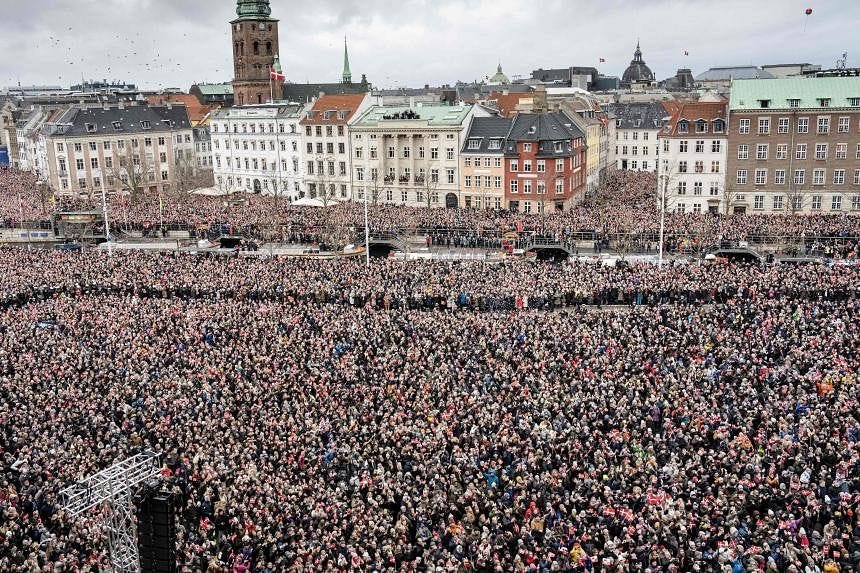
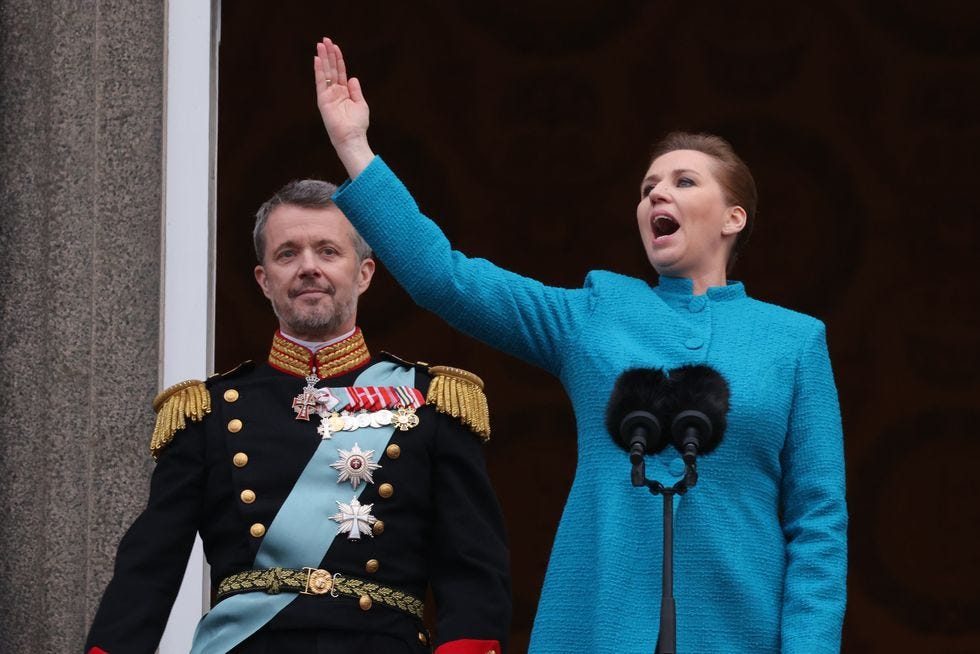
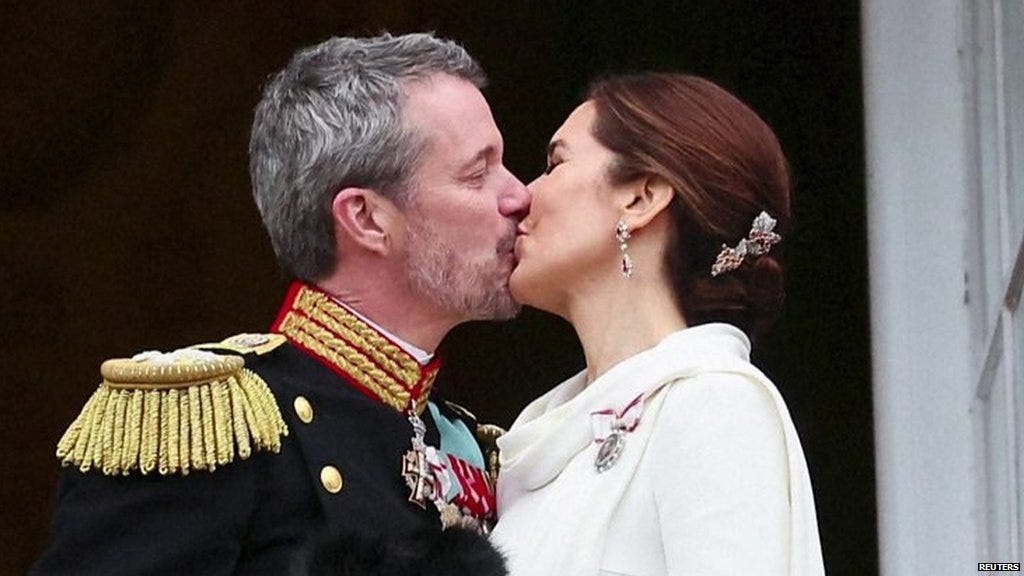
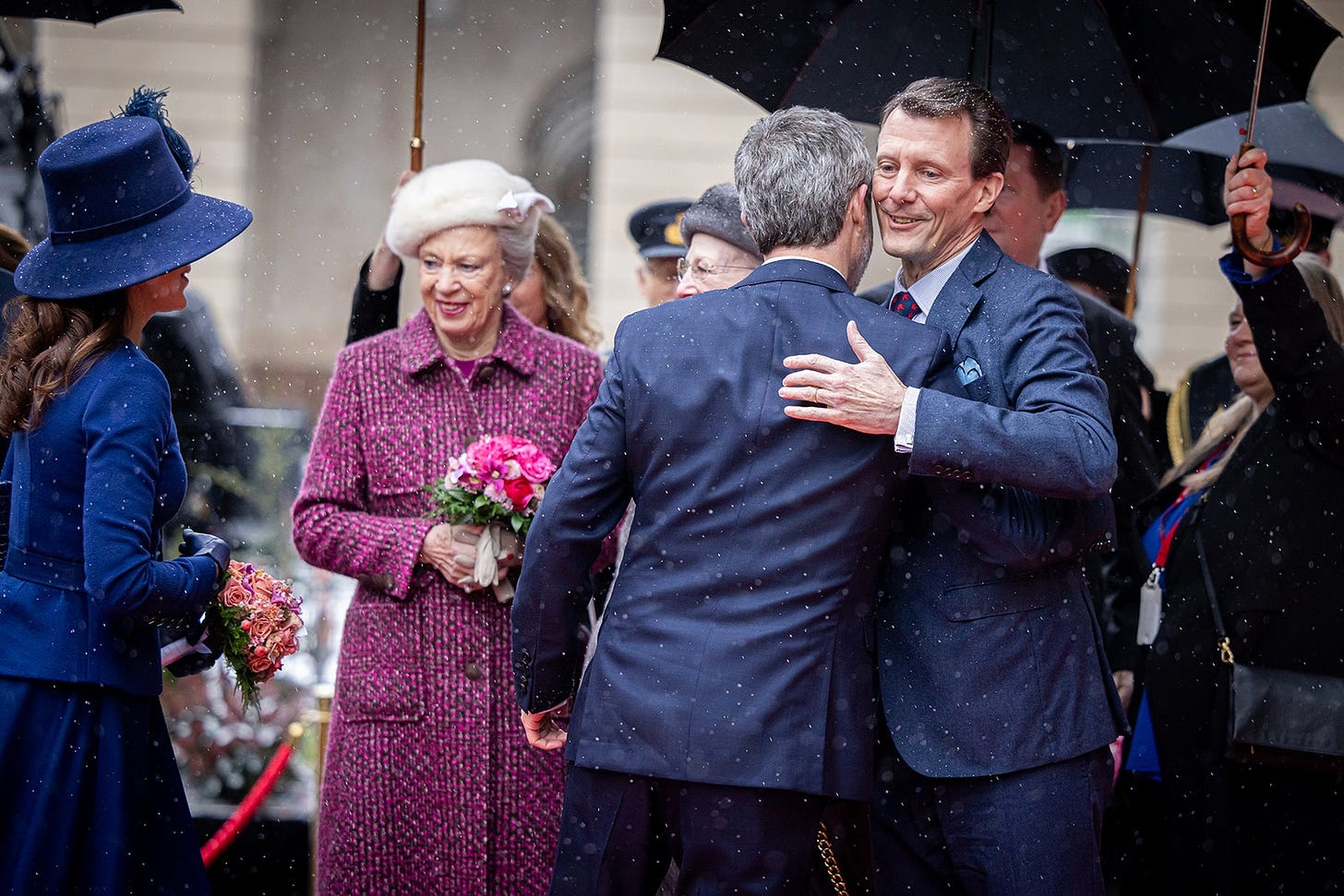


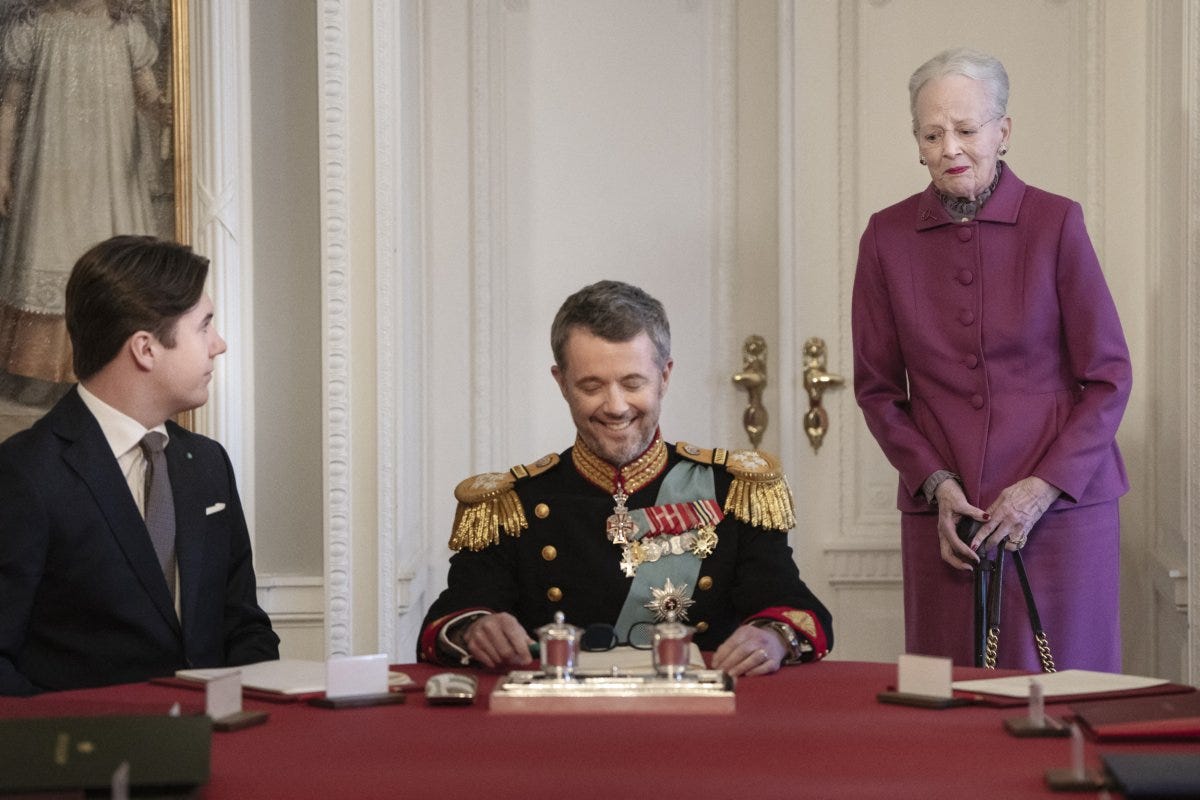
I'm really glad Margrethe went this direction. It felt somewhat macabre watching QE2 continue to do duties even as she was clearly wasting away before our eyes. Also I feel like Charles first year would have went a lot better if she were still alive.
Agree 100%. The British coronation was over blown and I really didn't realize how anachronistic it was (and how petty they were being) until you saw "who came in robes and who wasn't allowed." And then the fact that there are no photos with the extended royal family - just the "working royals" which just makes them look old and out of touch.